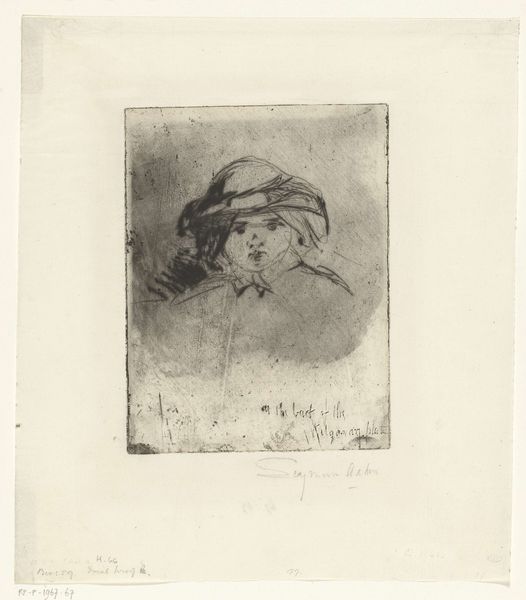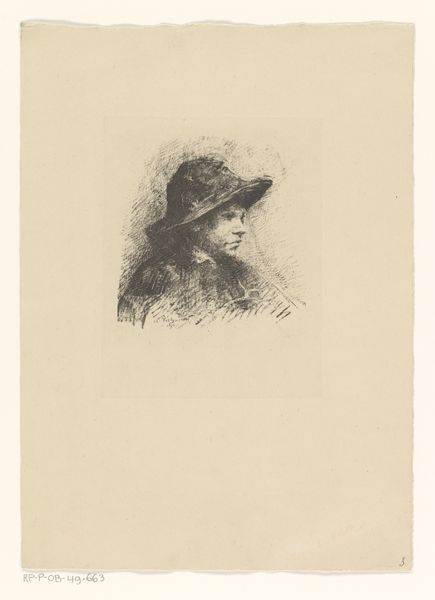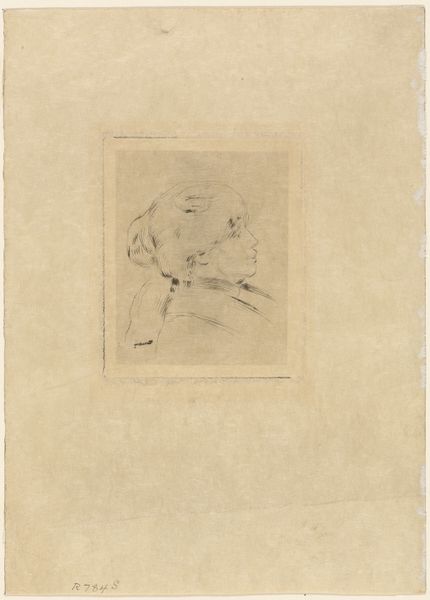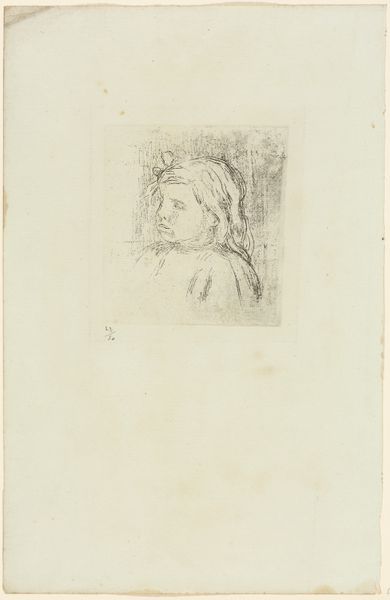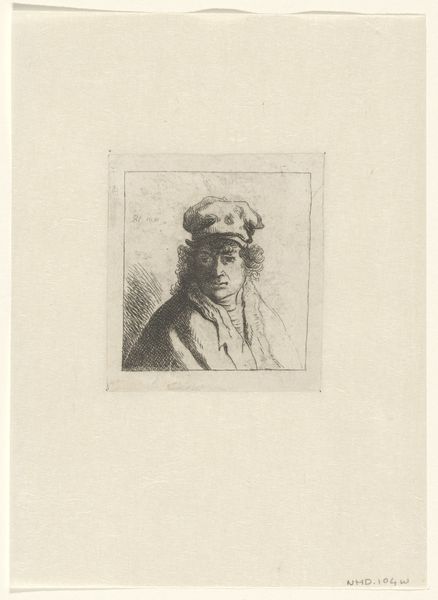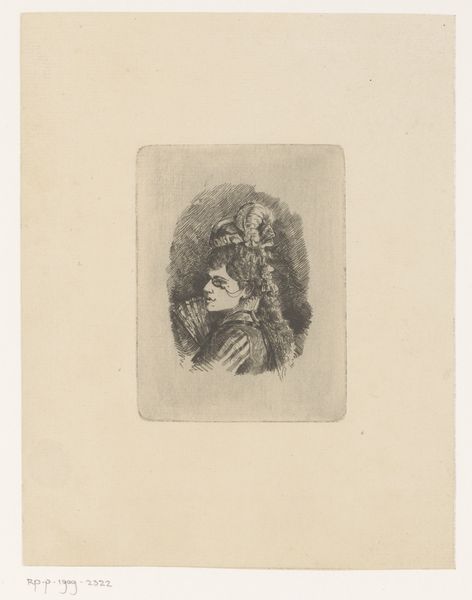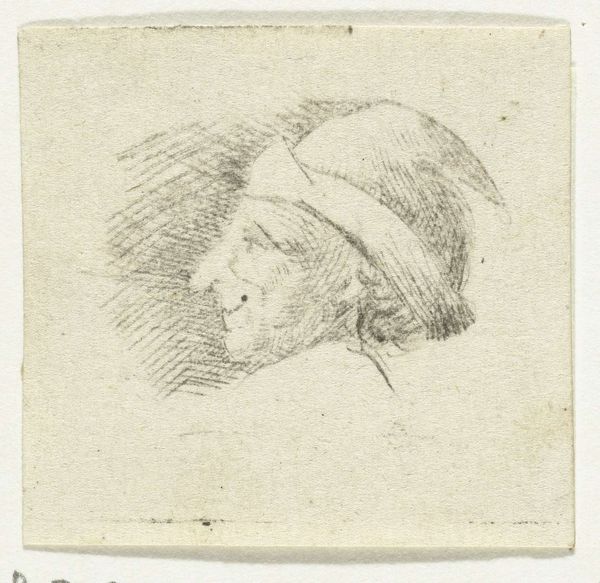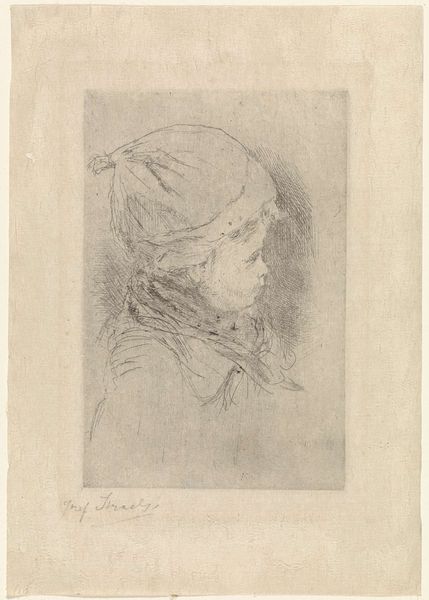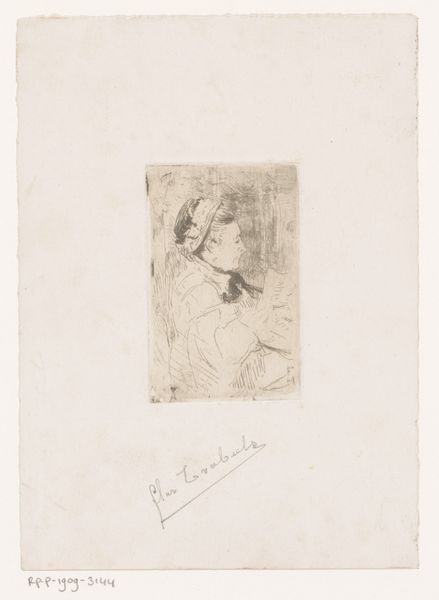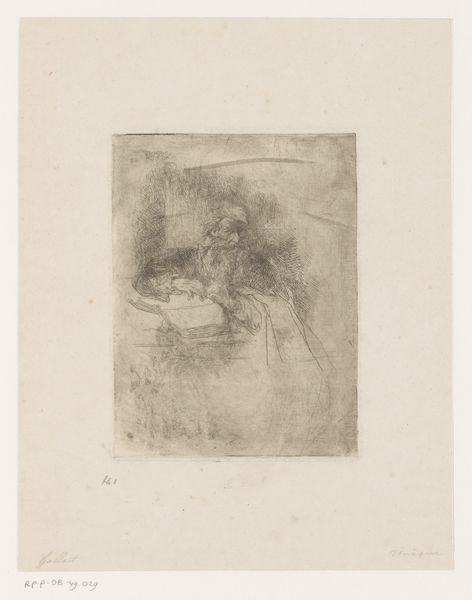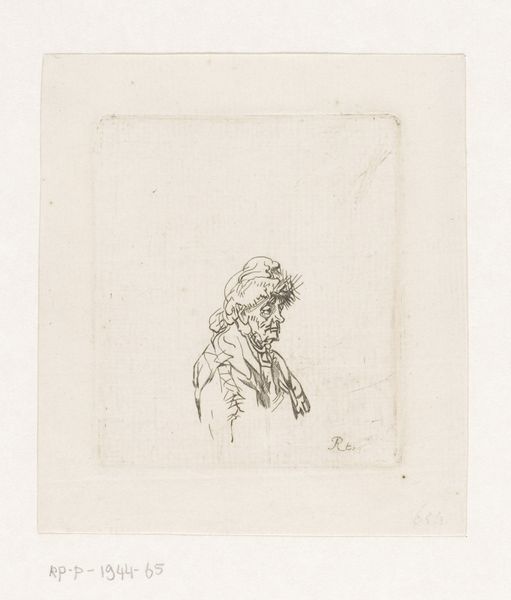
Portret van een onbekende man met een pijp in de band van zijn hoed 1850 - 1910
0:00
0:00
#
pencil drawn
#
toned paper
#
light pencil work
#
pencil sketch
#
personal sketchbook
#
sketchbook drawing
#
pencil work
#
watercolour illustration
#
sketchbook art
#
watercolor
Dimensions: height 146 mm, width 90 mm
Copyright: Rijks Museum: Open Domain
Curator: Here we have a subtle, quietly captivating work entitled "Portret van een onbekende man met een pijp in de band van zijn hoed"—Portrait of an Unknown Man with a Pipe in his Hatband—estimated to have been created sometime between 1850 and 1910 by Fr. van Groeningen. Editor: The understated light pencil work creates an unexpectedly somber and solitary mood. He seems lost in thought, perhaps burdened. Curator: Indeed. Van Groeningen’s expert use of delicate lines creates a sense of realism, grounding the viewer in a tangible reality, yet it simultaneously highlights the sitter's introspection. The paper tone amplifies the subtle tonal variations. Editor: That pipe tucked into his hatband speaks volumes, too. Was it a marker of class, profession, or simply personal habit? It’s this tension between anonymity and implied biography that piques my interest. The sketch hints at societal expectations of men, perhaps farmers or fisherman of that era, alongside the personal history he embodies. Curator: A keen observation. I would posit that its formal composition—the precise rendering of light and shadow—presents a carefully constructed study of form above other contextual layers. Note, for instance, how the artist utilizes hatching to build the form and delineate features. Editor: Agreed, but it is the sketch’s intimate, almost voyeuristic feel that draws me in, especially knowing that this portrait is of an unknown sitter. We get an illicit peek into the sitter’s lived experiences via his posture and countenance. Curator: The way van Groeningen employs these techniques makes one consider this portrait as an examination into the human condition, exploring themes of time and memory—and the artist's process. Editor: Perhaps, and considering the turbulent times across Europe then, this man also could represent societal changes, quietly witnessing or participating in reform. Food for thought. Curator: Indeed. Thank you. I have a renewed perspective on this portrait through the contextual considerations we've engaged. Editor: As do I. Considering the semiotic charge carried in even an apparently quotidian form such as this sketch, really drives home the continued relevance of portraiture today.
Comments
No comments
Be the first to comment and join the conversation on the ultimate creative platform.
